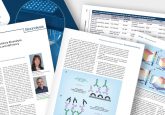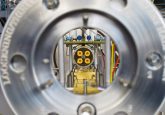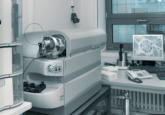7. Are there any other challenges or limitations that interfere with your work that HRMS could assist with?

Diego Cortes: “With the development of protein therapeutics, one of the current challenges is to understand biologic catabolism and the potential impact on bioanalysis and PK. Recombinant therapeutic protein drugs have advanced considerably in complexity over the years and can be very diverse, with countless possibilities as to how a molecule breaks down or becomes altered when it is in vivo. This makes detection, identification and interpretation of catabolites and biotransformations extremely complex and time-consuming, with significant consequences if something important is missed.
One specific area in bioanalysis where HRMS has been especially beneficial, particularly for small molecules, is chemical structural assignment. This is achieved by a combination of various options and features on HRMS instruments, including assignment of correct molecular formulae and elemental composition for unknown metabolites; and the possibility of calculating change in elemental composition due to metabolic modifications.
With large molecules, characterization of biotransformation can be a great resource on the drug development process. Characterization of biotherapeutic protein biotransformation in vivo is fundamentally challenging with the complexity of potential catabolic products increasing with protein size. This is most definitely a challenging area where HRMS is beginning to be seriously applied to great benefit.”
Graeme Clark: “HRMS is a form of mass filter. Whilst increasing resolution offers more power datasets for macromolecular analysis, such as proteins, for small molecule metabolite profiling and metabolomics approaches, broadening the chemical space that the ionization mode operates in would prove more beneficial.”
Ian Edwards: “As mentioned, ligand binding assays are the classical route to protein quantification. However, specificity of reagents and cross-reactivity are two concerns with this technology. The big play for LC–MS is that it can serve as a reference method to validate ligand binding assay specificity; for example, intact protein quantification using HRMS as a direct quantitative measurement of the whole molecule shows great promise as an alternative or complementary technique for validation of ligand binding assays.”
Scott Summerfield: “I think there’s a lot HRMS can do around understanding drug disposition at the level of tissues or subcellular fractions. The ‘Three Pillars of Drug Development’ (drug at target, target engagement and demonstration of pharmacology) will place very different questions in front of bioanalytical groups’ perhaps half way between what we see as quantitative and qualitative applications.
In the immunogenicity area, there are great opportunities for new combinations of MS and immunoassay, such as characterizing immune complexes.
For the analysis of oligonucleotides, HRMS seems to be the better option because the fragmentation of the nucleotide bases tends to produce very non-selective low m/z fragment ions.”
Timothy Garrett: “Yes, dealing with larger file sizes means the need for storage space at a much faster rate.”





